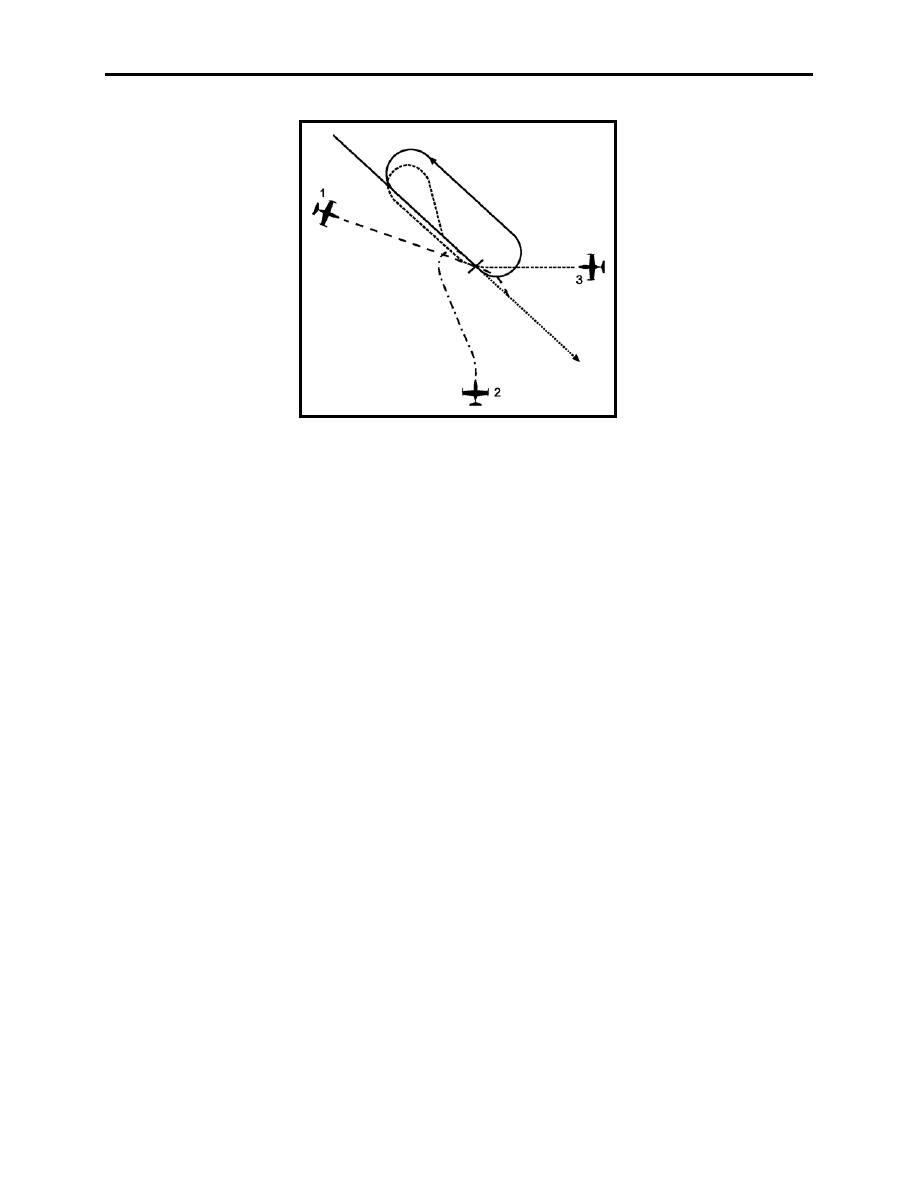 |
|||
|
|
|||
|
|
|||
| ||||||||||
|
|  RADIO INSTRUMENTS
CHAPTER THREE
Figure 3-12 Course Alignment
1. Turn in the shortest direction to intercept the initial approach course. When established
on course, begin the descent. This method works well when on a heading within 60 of the
initial approach course since the overshoot is minor and can be quickly corrected. When a turn
of greater than 60 is required, this method is not recommended due to excessive displacement
from the approach course. Despite such displacements, this procedure is expected by ATC
unless some other alignment procedure is requested and approved (Example 1 in Figure 3-12).
2. Request an offset entry from the controlling agency. Instead of flying directly to the IAF,
fly to a point from where the radius of turn will cause the aircraft to turn on course at the
completion of the turn. The pilot must take into account the number of degrees of turn required
and the distance from the station when determining the approximate offset point. A request for
this procedure might sound like "Gulfport Approach, Rocket 205, request proceed to OSLOW
via the Gulfport 310 at 30." (Example 2 in Figure 3-12)
3. Execute an alignment turn within the published holding pattern. It is not necessary to fly
to the outer limit of the holding pattern when using this method; fly far enough to ensure the
alignment can be completed prior to the IAF. A request for this procedure might sound like:
"Gulfport Approach, Rocket 205, request a holding entry turn for alignment prior to
commencement of the approach"(Example 3 in Figure 3-12).
TACAN Initial Approach Segment
The intermediate segment of an IAP extends from the intermediate approach fix (rarely
published and never identified as such) to the FAF. An intermediate approach segment has two
purposes: to ensure alignment with the Final Approach Segment (thus there are few turns at a
FAF) and assist in aircraft configuration changes (thus the rate of descent in an intermediate
segment is either zero or very shallow.
RADIO INSTRUMENTS
3-37
|
|
Privacy Statement - Press Release - Copyright Information. - Contact Us |